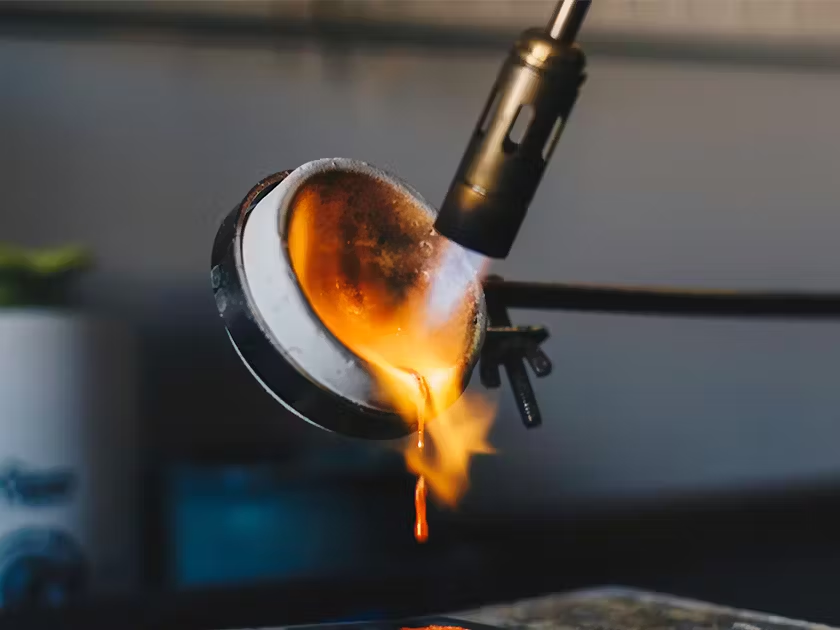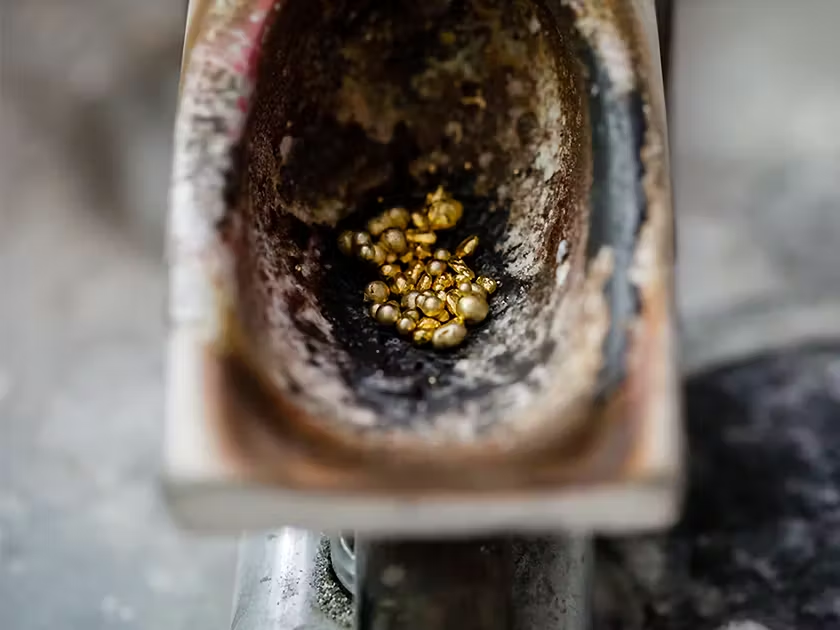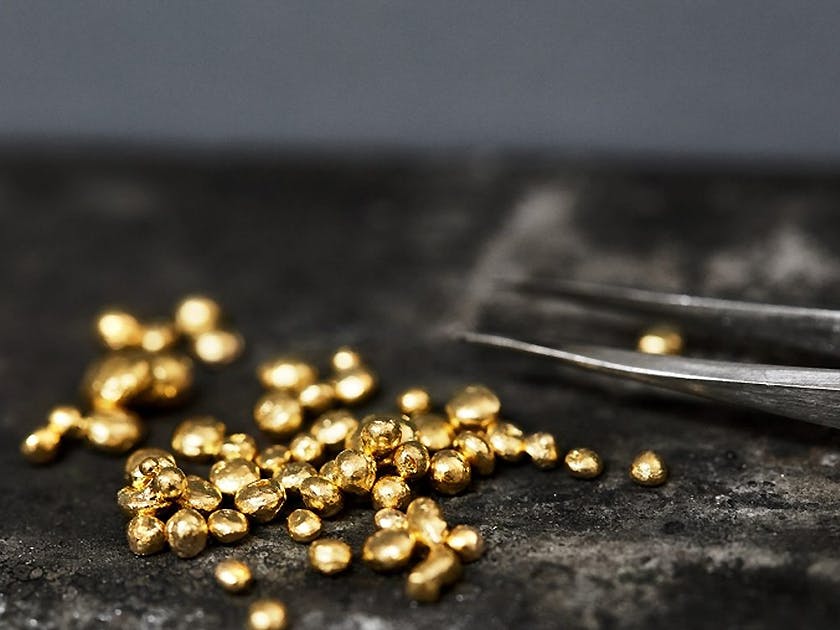
Are you wondering how the magnificent process of gold casting shapes exquisite jewelry? This essential guide peels back the curtain on this age-old craft. You’ll learn about the crucial steps from wax models to the final polish, discover the equipment needed, and delve into the roles alloys and casting companies play. Be prepared to gain insights into crafting precious gold pieces without the unnecessary jargon.
- Key Takeaways
- Exploring the Gold Casting Process
- The Gold Alloys in Jewelry Casting
- Gold Casting Equipment Essentials
- Finishing Techniques for Gold Cast Jewelry
- Creatingewelry with a Casting Company
- Understanding Pricing in Gold Casting
- Client Testimonials and Success Stories
- Summary
1 KEY TAKEAWAYS
- The gold casting process involves creating a wax model, coating it with investment material to create a mold, and then heating the mold to remove wax and make way for molten gold during casting.
- The durability and aesthetics of gold jewelry are significantly influenced by the type and fineness of gold alloys used, which may include a combination of metals like copper, silver, palladium, or zinc.
- Professional gold casting companies offer services that provide consistency in higher quality jewelry casts, rapid prototyping, and cost-effective solutions for pre-production runs, contributing to the success of businesses relying on their expertise.
2 EXPLORING THE GOLD CASTING PROCESS

Gold Casting by Kernowcraft
At the heart of gold jewelry casting is the intricate art of shaping the wax using carving tools such as files, creating a wax model that represents the final jewelry piece. This wax model is then attached to a wax stem by a sprue, forming a pathway for the molten gold to flow into the mold.
In the process of casting preparation, the dry ingredients of gypsum plaster-based investment are mixed with water. This investment mixture is then poured over the cooled wax model in a flask to create the mold. The flask, holding the wax models encased in hardened investment material, forms the mold.
The flask is then placed into a kiln to harden the mold and melt away the wax through a burnout phase. This leaves a cavity ready for the gold casting. The gold must be melted at temperatures between 1,617 to 2,006 degrees Fahrenheit to ensure proper flow into the mold’s cavities. This process, known as investment casting, achieves close dimensional tolerances, often eliminating the need for further machining or refinement after casting.
3 GOLD ALLOYS IN JEWELRY CASTING
When we talk about gold jewelry, it’s not just pure gold that’s involved. Gold is often alloyed with metals like:
-
copper
-
silver
-
nickel
-
palladium
-
zinc
to enhance its durability and hardness. The amount of gold in an alloy is expressed in carats or fineness, with higher carat numbers signifying a higher percentage of gold.

Gold Casting by Corey Eagan
Different gold alloys contribute to the array of gold jewelry we see today. Some examples include:
-
White gold: composed of gold alloyed with metals such as platinum, palladium, nickel, and zinc. It is cherished for its enhanced durability and scratch resistance.
-
Yellow gold: the classic gold color, is a result of the combination of gold with metals like copper and zinc.
-
Rose gold: with its unique reddish hue, is a product of the mixture of gold with copper and silver.
-
Green gold: subtly colored, is an alloy containing gold, silver, and sometimes copper.
Each of these alloys, typically alloyed with other metals, brings unique properties to the table, influencing the aesthetics and durability of the final product.
4 GOLD CASTING EQUIPMENT ESSENTIALS
Gold casting is a process that requires specific equipment for each stage. The casting process starts with materials and machinery such as aluminum casting flasks, small crucibles for melting metal, and a suitable kiln for firing. Aluminum, due to its properties, is commonly utilized in constructing molds for traditional gold casting techniques.
Depending on the technique employed, centrifugal casting, vacuum assisted casting, or pressure casting methods are used to ensure even gold flow into the mold. After casting, handling the hot metal castings safely is paramount. Steel tongs are mandatory for removing the castings from the kiln, ensuring safety during this stage. The use of a casting machine can greatly improve the efficiency and precision of this process.
5 FINISHING TECHNIQUES FOR GOLD CAST JEWELRY
Once the gold casting process is completed, the jewelry castings undergo finishing techniques, including the plating process. The plating process involves dipping the cooled castings, which are extracted from the molds and cleaned to remove any remaining investment material. This prepares them for further finishing, such as buffing, which eliminates imperfections and irregularities.
Mass finishing techniques offer an efficient solution to the finishing process by potentially saving 50-75% of the man-hours traditionally required, simplifying the task of removing surface flaws after rough cutting. Burnishing and dry polishing are key finishing techniques that enhance the gold jewelry’s brightness and luster without the use of abrasives.
Selecting appropriate media shapes and sizes is crucial for reaching every part of a jewelry piece’s surface during finishing, ensuring no area is unpolished. However, it’s noteworthy that finishing services such as sprue grinding or hand polishing may incur additional charges, varying based on factors like the casting’s size and weight.

Gold Alloy by Cristina Stan Jewellery Art
6 CREATING JEWELRY WITH A CASTING COMPANY
Having explored the complexities of gold casting, one might wonder about the feasibility of creating their own gold jewelry. This is where a gold casting company comes into play. These companies offer the production of highly intricate jewelry pieces with fine surface finishes, utilizing their specialized expertise and technology.
Investment casting provided by specialists ensures consistent higher quality casting across multiple jewelry castings. Working with a gold casting company also enables rapid creation of jewelry prototypes, which is crucial for evaluating designs before large-scale production. Additionally, casting companies offer lower tooling costs, making it a cost-effective solution for pre-production runs.
7 UNDERSTANDING PRICING IN GOLD CASTING
The cost of gold casting services includes a base labor price for raw casting, with additional charges applied based on factors such as mold complexity and customer specifications. Discounts on casting labor can be offered when arranging multiple small pieces in a single mold, which can be priced as one labor charge.
Gold casting precious metal prices are calculated using the market spot price on the day of shipment, adjusted for the karat value and inclusive of a fabrication charge. Specifically, the cost to cast 10K gold is determined by the current gold market price per ounce, factoring in a multiplier for the gold’s karat, plus a fabrication charge. Understanding these cost factors can help you make informed decisions about your gold casting projects.
8 CLIENT TESTIMONIALS AND SUCCESS STORIES
Nothing speaks louder about the benefits of using gold castings services than the voices of satisfied clients. Clients such as a goldsmith/silversmith from Omaha, NEC, Wyatt Austin Jewelers, Pak’s Jewelers, and others, have held in high regard the service quality received from the gold castings provider. They specifically appreciated the swift turnaround, competitive pricing, and the provider’s ability to capture the desired detail and quality from sketches and descriptions.
The Omaha goldsmith/silversmith credits the gold casting provider with playing a significant role in their business success and profitability due to:
-
Exceptional customer service
-
Attention to detail
-
Ease of communication
-
Flexibility in service, including effective over-the-phone transactions
These factors, including minimum purchase, stood out as important factors in client satisfaction and convenience.

Communication between customer and client by SmartKarrot
9 SUMMARY
By now, it’s clear that gold casting for jewelry creation is a complex but rewarding process. From wax carving to mold making, casting, and finishing, each step contributes to the final product’s quality and allure. Understanding the different gold alloys used in casting and the finishing techniques applied on the castings is crucial for anyone venturing into this fascinating field.
Working with a gold casting company can simplify this process, ensuring high-quality, intricate jewelry pieces. By understanding the cost factors involved in gold casting, you can make informed decisions and potentially save costs. The testimonials of satisfied clients further endorse the benefits of using professional casting services.
